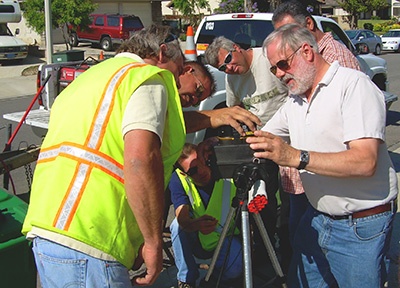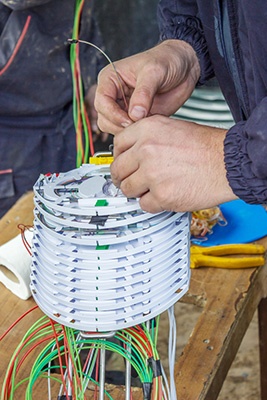 In previous blogs based on our Complete Guide to Fiber to the Premises (FTTP) Deployment eBook, we’ve talked about the planning needed if your FTTP installation is to be a success, as well as the impact of the landscape on choosing between an aerial or buried deployment. In this post, we’ll look at some of the factors impacting cost, and how they relate to the customer experience of FTTP deployments.
In previous blogs based on our Complete Guide to Fiber to the Premises (FTTP) Deployment eBook, we’ve talked about the planning needed if your FTTP installation is to be a success, as well as the impact of the landscape on choosing between an aerial or buried deployment. In this post, we’ll look at some of the factors impacting cost, and how they relate to the customer experience of FTTP deployments.
The impact of labor costs
As well landscape and terrain, labor expense is another important consideration. Some cable installation processes require specialist equipment and manpower. Take cable blowing, for example. Large cable blowing machines can cost in the region of $16,860 and weigh several hundred kilograms. Gasoline-powered compressors cost at least $8,430 to purchase. It often takes hours to transport these machines, set them up and close down the site. And that’s just for one premise! The entire process has to be repeated every time a customer in that locality requests a fiber connection.
 Costs can also spiral when fusion splicing is required. This process involves using localized heat to melt or fuse the ends of two optical fibers together. Typically, an engineer will strip off the fiber’s protective coating to get at the cable itself. Once the fiber has been exposed it is cleaned with alcohol before being inserted into a device called a fusion splicer. The device lines the fiber ends up and welds them together.
Costs can also spiral when fusion splicing is required. This process involves using localized heat to melt or fuse the ends of two optical fibers together. Typically, an engineer will strip off the fiber’s protective coating to get at the cable itself. Once the fiber has been exposed it is cleaned with alcohol before being inserted into a device called a fusion splicer. The device lines the fiber ends up and welds them together.
Fusion splicing isn’t a simple operation – it requires the involvement of a highly experienced splicer or jointer. In developed countries, these professionals generally work for large operators – companies like BT and Verizon – and are not freely available. Those that can be obtained on the open market often charge high rates. In many developing countries, trained splicers and jointers don’t exist. They often have to be brought in from overseas at considerable expense.
Ensuring a trouble-free customer experience
The customer is a very important factor in any FTTP installation. There is no simple way of getting fiber into the premise. In many cases, a small micro drop will have to be cut into the customers’ garden or back yard so that the cable can be connected to the premise. Business customers want minimum disruption on site when fiber is being installed. Homeowners are equally concerned about the potential damage an installation may cause to their properties. Unfortunately, there are a number of fiber installation practices that can potentially cause a great deal of inconvenience to both business and home owners. For example, there is always a risk when blowing cable into a premise that water, dirt and other material will be blown into the property. If the process is reversed and a cable blowing machine is brought into a property it may cause damage to carpets and other soft furnishings.
Getting large blowing machines and compressors into a property also requires additional set-up and tear down. Even techniques like cable pushing can cause a certain amount of inconvenience to the customer if they need to find space to house excess cable.
When accessing different installation practices, it is vital that the operator keeps the customer in mind at all times. It is often this installation process which makes up the bulk of a customer’s experience with the operator so creating a good customer experience is vitally important.
Once you’ve evaluated the different factors that impact the last drop, it is time to make a choice between FTTP installation methods, such as direct cable, cable pre-installed in duct, blow fiber/cable or pullable/pushable cable. In forthcoming posts we will talk through the plus and minuses of each of these methods. In the meantime, if you want to read the full story download the Complete Guide to Fiber to the Premises Deployment eBook below:


